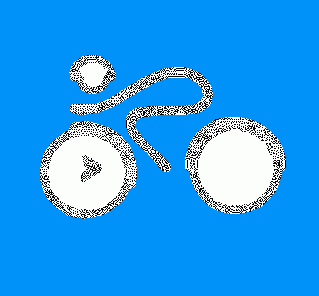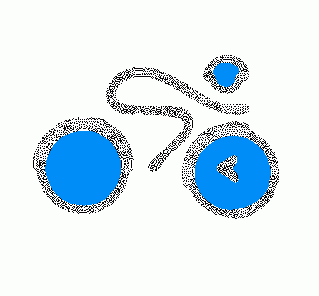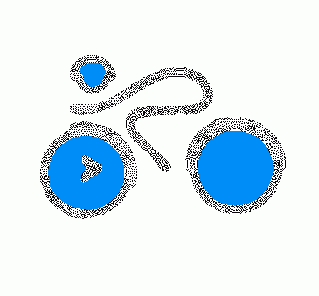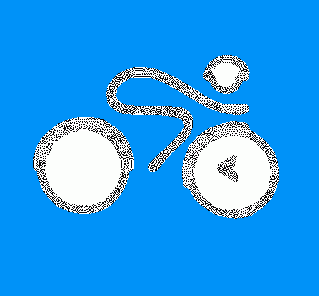| Newsletter - 2000 Archive |

|

|
Cycling Club |

|

|
| Newsletter - 2000 Archive |

|

|
Cycling Club |

|

|
Next--->
In his submission on pace-line riding, Tom Hocking wrote that a substantial amount of energy can be saved when drafting. It may be of interest to look at the following info regarding energy requirements. Richard Rafoth in his 1993 book "Bicycling Fuel: Nutrition for Bicycle Riders [Publisher: San Francisco Bicycle Books. p. 31] included an interesting table about the exponential increase in caloric requirements as speed increases. It is not difficult then to calculate how much can be saved by using a pace-line.
| Riding Speed | Calories Expended | ||||
| [Mph] | [Kph] | [Cal/Mile] | [Cal/Km] | [Cal/Hr] | [Cal/Minute] |
| 5 | 8.0 | 7.4 | 4.6 | 87 | 1.5 |
| 6 | 9.6 | 8.3 | 5.2 | 100 | 1.7 |
| 7 | 11.2 | 9.3 | 5.8 | 114 | 1.9 |
| 8 | 12.8 | 10.5 | 6.6 | 134 | 2.2 |
| 9 | 14.4 | 11.9 | 7.4 | 157 | 2.6 |
| 10 | 16.0 | 13.4 | 8.4 | 184 | 3.1 |
| 11 | 17.6 | 15.1 | 9.4 | 216 | 3.6 |
| 12 | 19.2 | 16.9 | 10.6 | 253 | 4.2 |
| 13 | 20.8 | 18.9 | 11.8 | 296 | 4.9 |
| 14 | 22.4 | 21.1 | 13.2 | 345 | 5.7 |
| 15 | 24.0 | 23.4 | 14.6 | 401 | 6.7 |
| 16 | 25.6 | 25.8 | 16.2 | 463 | 7.7 |
| 17 | 27.2 | 28.5 | 17.8 | 534 | 8.9 |
| 18 | 28.8 | 31.3 | 19.5 | 613 | 10.2 |
| 19 | 30.4 | 34.2 | 21.4 | 700 | 11.7 |
| 20 | 32.0 | 37.3 | 23.3 | 797 | 13.3 |
| 21 | 33.6 | 40.6 | 25.4 | 903 | 15.0 |
| 22 | 35.2 | 44.0 | 27.5 | 1019 | 17.0 |
| 23 | 36.7 | 47.6 | 29.8 | 1146 | 19.1 |
| 24 | 38.4 | 51.4 | 32.1 | 1283 | 21.4 |
| 25 | 40.0 | 55.3 | 34.6 | 1433 | 23.9 |
| 26 | 41.6 | 59.4 | 37.1 | 1594 | 26.6 |
| 27 | 43.2 | 63.6 | 39.8 | 1767 | 29.5 |
| 28 | 44.8 | 68.0 | 42.5 | 1954 | 32.6 |
| 29 | 46.4 | 72.5 | 45.3 | 2154 | 35.9 |
| 30 | 48.0 | 77.5 | 48.2 | 2365 | 39.4 |
Note: Rafoth bases this table on the following assumptions: a 75 kg rider with a 10 kg bicycle, a base metabolism of 50 cal/hr and a 25% efficiency for the human "machine" For estimation purposes these values are sufficiently accurate for all cyclists.
Source: R. Rafoth 1993. Bicycling Fuel: Nutrition for Bicycle Riders. San Francisco: Bicycle Books. p. 31
_